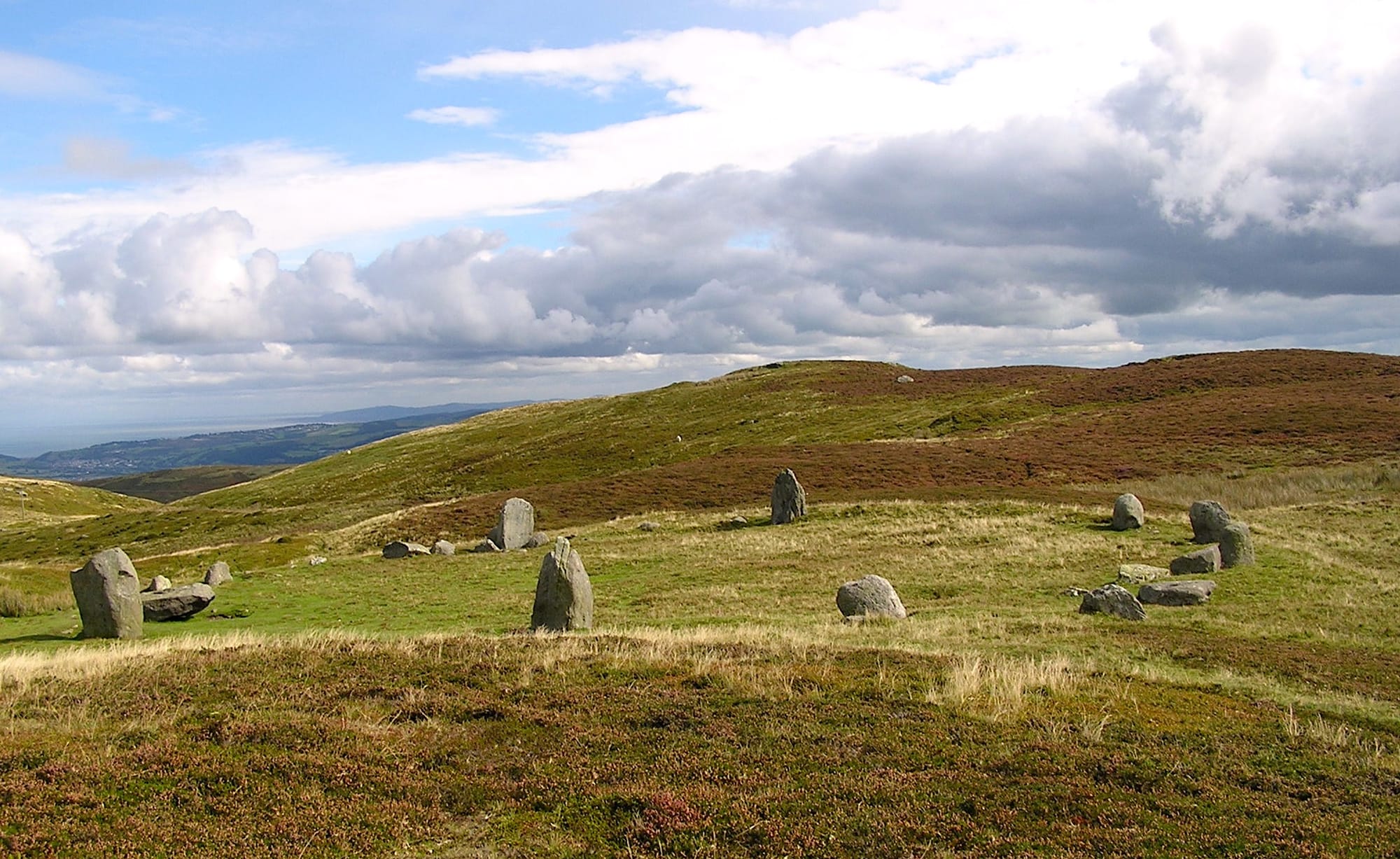Prehistoric stone circles

What is it?
Druid’s Circle above Penmaenmawr is a Neolithic stone circle

Where is it?
Penmaenmawr, LL34 6DN
What’s there?
Thirty stones in an unevenly spaced circle, with a diameter of roughly 80 feet
Facts -
▪ Despite the name, this stone circle has no connection whatever with the druids; in fact, it predates the druids by some 2000 years. The circle probably dates to the Neolithic period and may be as much as 5000 years old
▪ The most striking stone has an obvious ledge, and this has led to it being called the Stone of Sacrifice, though there is no evidence that any form of sacrifice ever took place here.
▪ Excavations in the 1950s revealed the cremated remains of children, stored in urns of a type which fell out of use c.1400BC.
▪ Nearby was a pit containing another urn with the cremated remains of a child.
▪ Several prehistoric trackways run past the circle, which suggests that it was a place of some importance
▪ This area was important c.3000BC because the type of rock at Penmaenmawr, augite granophyre, was ideal for making stone axes, which were vital to humans’ development. The stone flakes easily into sharp-edged shapes while also being hard enough for durability as axe heads. The stone could also be polished. Axe heads from Penmaenmawr have been discovered around Britain including in Scotland, Yorkshire and the Thames Valley. One was found at Rhyl in 1926.